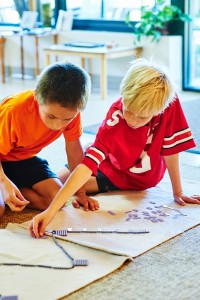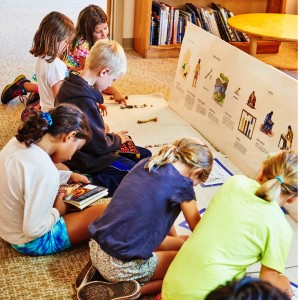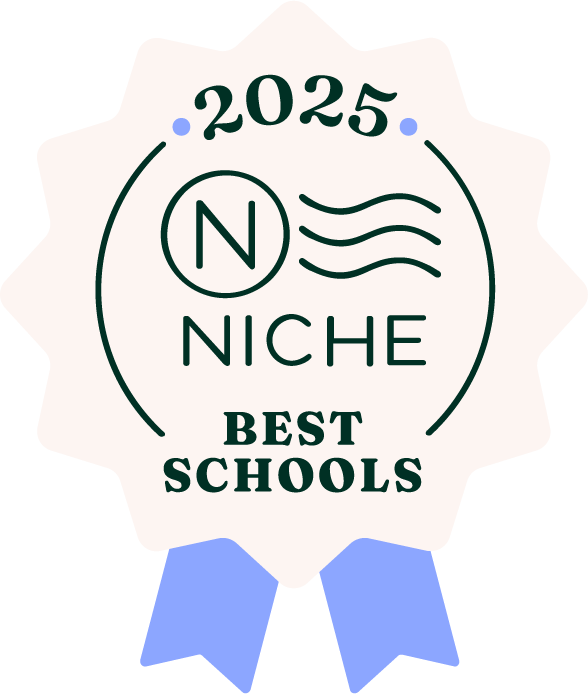First through third grade Children 6 to 9 years of age are inquisitive about the world around them and they are ready to develop and refine the skills necessary for inquiry. The Lower Elementary children at The Greensboro Montessori School study an integrated curriculum which builds skills in the core areas of reading, writing, and math as they explore cultural subjects such as physical science, biology, geography, history, social studies and Spanish. Manipulative materials support learning in all subject areas. Students also have the opportunity to meet weekly for classes in Physical Education, Art, and Music.
A Typical Day
Each day begins with a community meeting to talk about the events and expectations of the day. Both Teachers and students have opportunities to lead these meetings, and sometimes students will share their work with their peers. After the meeting, students gather their personalized plan of work. Plans involve lessons, assignments, and time for independent practice. Students work alone and collaboratively as needed. After a communal lunch and daily recess, students are engaged in Art, Music, Spanish, Environmental Education, Physical Education, or independent work and lessons.
The Five Great Lessons form the foundation of the Lower Elementary Curriculum and give the children an impressionistic understanding of the world in which they live. These introductory lessons point the children toward further learning through hands-on experiments, reading, writing, calculation, and presentation. Additionally, the children use and expand the practical life skills they need in order to become independent learners.

Collaborative Learning
Children of this age are hungry for knowledge and continuously ask questions about the “how” and “why” of their world. In a Montessori elementary classroom, all subjects are integrated to give the children an understanding of the interconnectedness of everything in the universe. Children are allowed to explore and research the answers to their questions, which ultimately leads to more questions. Children view their world in a way that is not fragmented, but as an integrated whole. They acquire an idea of the vastness of the universe as well as an understanding of how each small aspect of nature is crucial to the whole. They come to realize just how short a time human beings have existed on the earth and how written language has existed for an even shorter time.
The Five Great Lessons:The Creation of the Universe, The Coming of Life, The Coming of Human Beings, The History of Writing and The History of Numbers.
Students have many opportunities to enrich their studies through field trips. First level students enjoy day long excursions to science and history museums. Second and Third year students have the opportunity to attend a 3 day, 2 night field trip to Sound to Sea at Trinity Center on Salter Path, NC. This program helps our students understand how and why we are tied to the earth. To recognize the ecological communities across the island and investigate the creatures that live there.
Many key subject areas are included in our Lower Elementary curriculum: Botany, biology, physical science, environmental studies, history, geography, reading, writing, math, cultural studies, Spanish, world music, physical education, and art.

Extensive use of the School’s gardens and Land campus in Oak Ridge, in connection with the science and environmental studies, provide students with hands-on learning opportunities for understanding the delicate balances within nature. Plant and animal life cycles and systems, biome studies, and physical science studies are enriched by the possibilities for experiential learning.
As in the Primary classrooms, children are supported in resolving their own conflicts with each other. The lower elementary classrooms provide children with a Peace Table to come to for working out their disagreements.


